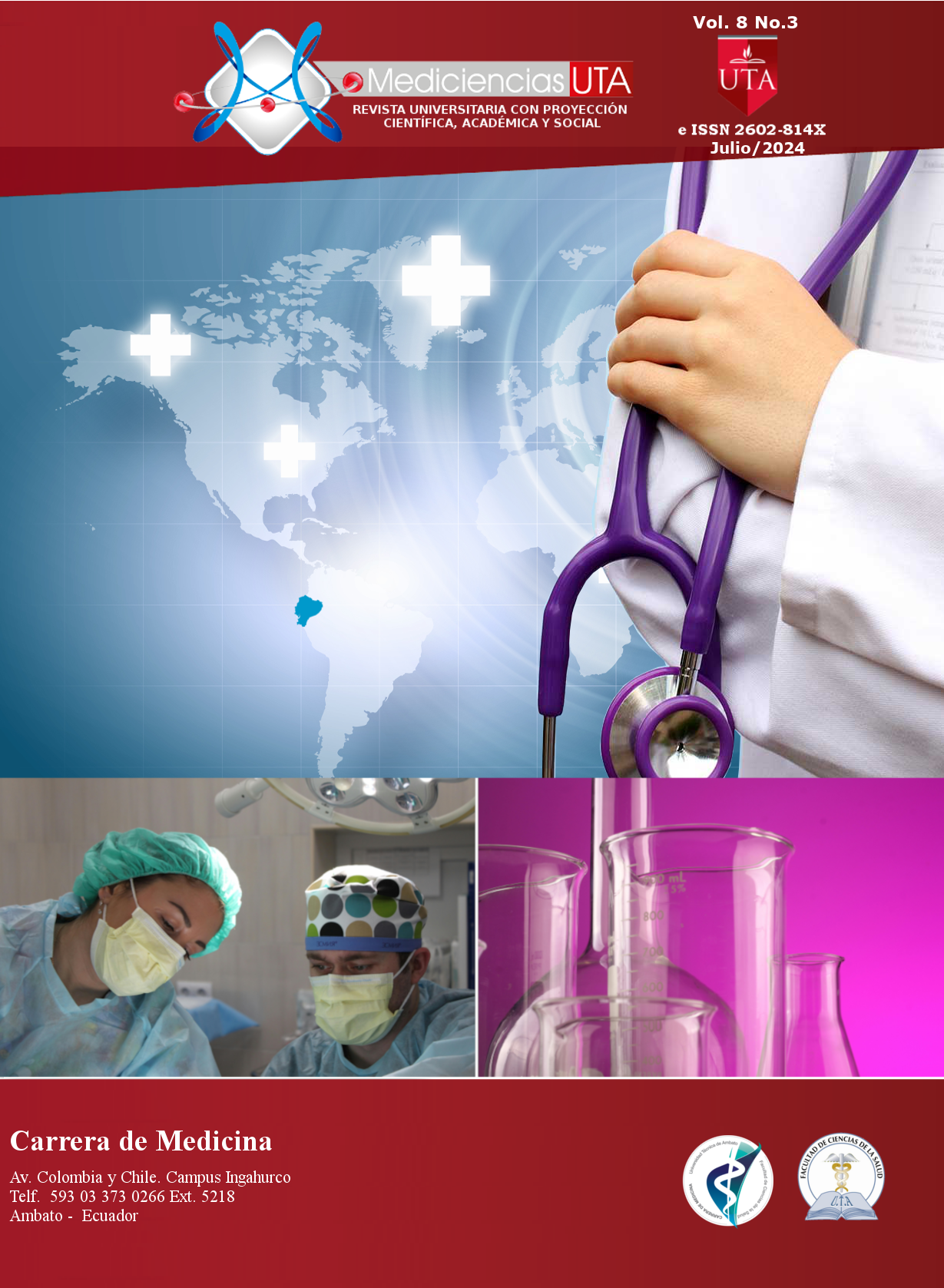Fat embolism syndrome associated femur fracture. a case report
Main Article Content
Abstract
Introduction: Fat embolism syndrome is a rare multisystem disorder characterized by pulmonary dysfunction, neurological alteration, fever and coagulation disorder, which is the product of the entry into the venous system of fatty material from the bone marrow. Objectives: To describe a clinical case of fat embolism syndrome associated with femur fracture. Materials and methods: A descriptive study was carried out to present a clinical case, with prior authorization from the teaching and research department of the Teodoro Maldonado Carbo Hospital. Clinical case: An 84-year-old female patient, with a pathological history of arterial hypertension and type II diabetes mellitus, presents a clinical picture of 1 hour of evolution, characterized by pain, inflammation, edema and functional limitation of the left lower extremity, lacerations on the scalp and lip secondary to a fall of 3.5 meters in height. At 24 h after hospital admission, the patient presented respiratory distress, tachypnea 36 breaths per minute, with decreased vesicular murmur in both lung fields, with oxygen saturation of 85%, HR tachycardia 120 bpm, neurological deterioration Glasgow 11/15, hypertensive crisis, BP 210/100. Discussion: The causes of fat embolism can be due to single or multiple fractures of long bones and even after orthopedic surgery such as osteosynthesis or intramedullary nail fixation, use of cemented prostheses, milling or in bilateral procedures. A systematic review of 144 patients with SEG confirmed that the risk is increased in cases of bilateral femur fracture. Complications of femur fracture include hemorrhage, fat embolism, and infections. Conclusion: Fat embolism syndrome is a rare pathology associated with cardiopulmonary dysfunction and disseminated intravascular coagulation, secondary to fat emboli that reach the systemic circulation and then the pulmonary artery, causing respiratory distress, hypoxemia and systemic inflammatory response. The most frequent etiological cause is the fracture of long bones such as the femur. For the diagnosis, it is necessary to perform pulmonary tomography angiography studies, which confirms a pulmonary embolism, in some cases, it is necessary to perform surgical procedures with thoracic surgery or cardiac catheterization to remove the fatty emboli lodged in the pulmonary circulation
Downloads
Article Details

This work is licensed under a Creative Commons Attribution-NonCommercial-ShareAlike 4.0 International License.



